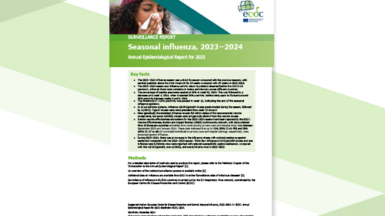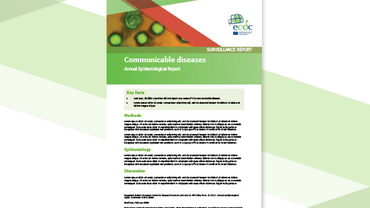Influenza virus characterisation - Summary Europe, September 2012
Since 01 January 2012, influenza A(H1N1)pdm09, influenza A(H3N2) and influenza B/Victoria and B/Yamagata lineage viruses have been detected in ECDC-affiliated countries.
Executive Summary
Since 1 January 2012, influenza A(H1N1)pdm09, influenza A(H3N2) and influenza B/Victoria and B/Yamagata lineage viruses have been detected and analysed in EU/EEA countries. The report summarises the findings as follows:
- Type A viruses have predominated over type B.
- A(H3N2) viruses have predominated over A(H1N1)pdm09 viruses.
- A(H1N1)pdm09 viruses continue to show genetic drift from the vaccine virus, A/California/07/2009, but the vast majority remain antigenically similar to it.
- During the last nine months, all European A(H3N2) viruses sequenced fell within five genetic clusters.
- Recent B/Victoria lineage viruses fell within the B/Brisbane/60/2008 genetic clade and were antigenically similar to reference cell-propagated viruses of the B/Brisbane/60/2008 genetic clade.
- Recent B/Yamagata-lineage viruses fell into two genetic clades, represented by the recommended vaccine component for the 2012/2013 influenza season, B/Wisconsin/1/2010 (clade 3), or B/Estonia/55669/2012 (clade 2); viruses in these clades are antigenically distinguishable.
- Antigenic analyses of A(H3N2)v viruses, the cause of zoonotic infections in the USA, indicate that these viruses are antigenically distinct from seasonal A(H3N2) viruses.
Download
Influenza-virus-characterisation-September-2012.pdf
- EN - [PDF-2.01 MB]






